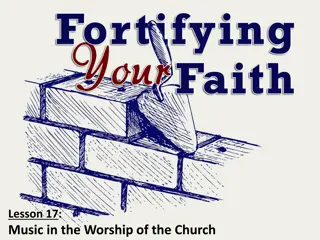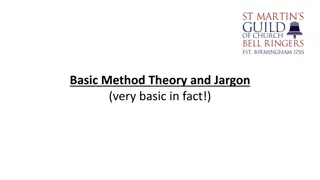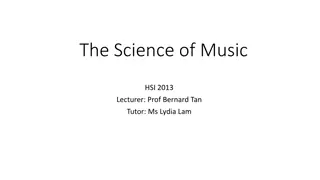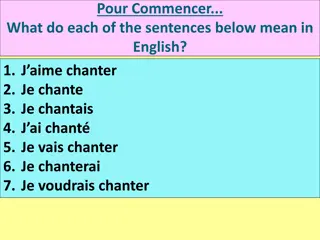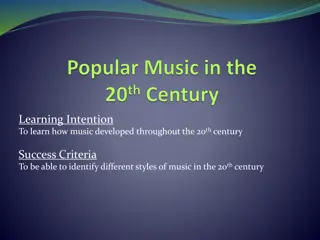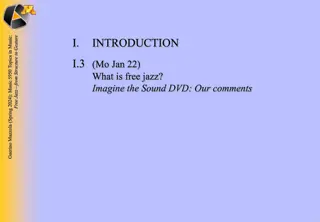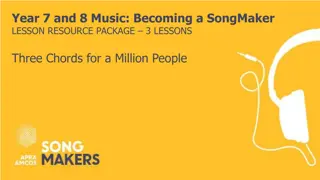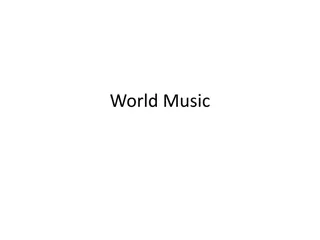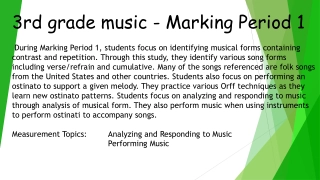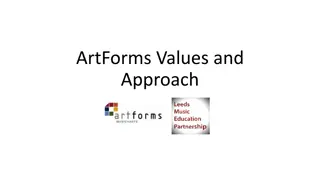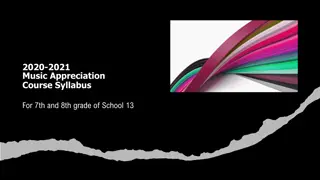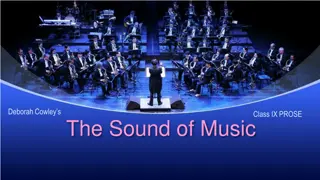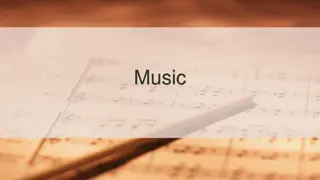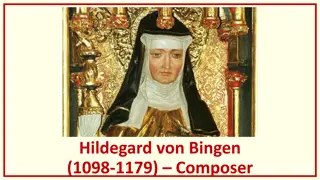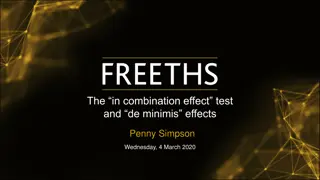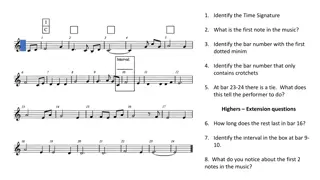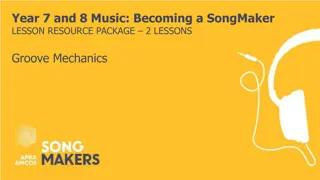Exploring Transpositional Combination and Contour Theory in Music
"Dive into the world of transpositional combination and contour theory within music theory, which involves creating larger sets by combining one set with its transpositions. Examples include creating tetrachords and diatonic collections through dyads and their transpositions. Explore the reversibility of transpositional combinations and the creation of octachords. Discover the application of these concepts in compositions such as Stravinsky's Symphony of Psalms and Bartok's chord structures. Uncover tritones, whole-tone tetrachords, and chromatic tetrachords in an intriguing study of musical structure and transformation."
Download Presentation

Please find below an Image/Link to download the presentation.
The content on the website is provided AS IS for your information and personal use only. It may not be sold, licensed, or shared on other websites without obtaining consent from the author. Download presentation by click this link. If you encounter any issues during the download, it is possible that the publisher has removed the file from their server.
E N D
Presentation Transcript
Transpositional Combination & Contour Theory
Transpositional Combination Combination of one set with one or more transpositions of itself to create a larger set 13 Tetrachords with this property: Examples: (0123) (01) (23) = 1 * 2 (02) (13) = 2 * 1 (0235) (02) (35) = 2 * 3 (03) (25) = 3 * 2
transpositional combination A dyad often combines with its own transposition, resulting in a tetrachord For example, [C D] and [E F#], could be united to form the whole-tone tetrachord [C D E F#]and repeated [C D E F#], could be combined with the transposition [F G A B], to form an eight-note diatonic collection.
[4578] (0134) = [47] + [58] = 3 * 1 [TE12] (0134) = [T1] + [E2] = 3 * 1 Stravinsky, Symphony of Psalms, I
transpositional combination Every transpositional combination may be reversed by de-combination" Only a small number of octachords can be created or de-combined by transpositional combination from dyads Any octachord capable of being produced by TC can de-combine in a several ways. [C D E F F# G A B] = ([F A C E] and [G B D F#]) = ([FA], [C E], [G B], [DF#]; ({C,D,F,G} and {E,F#,A,B}) = ({C,F}, {D,G},
George Perles Bartk chords 1. X = (0123) = the chromatic tetrachord 2. Y = (0246) = the whole-tone tetrachord 3. Z = (0167) = two tritones at T1
Transpositional combination 1. X = (0123) = the chromatic tetrachord (01) at T2 (02) at T1
Transpositional combination 1. Y = (0246) = the whole-tone tetrachord (02) at T4 (04) at T2
Transpositional combination 1. Z = (0167) = two tritones at T1 (01) at T6 (06) at T1
X = Eb-E-F-F# X = (0123)
Y = Bb-C-D-E Y = (0246)
Contour Relations CSEG: contour segment contour represented by string of numbers in angle brackets 0 always lowest note, 1 next highest, etc. Thus the CSEG gives a snapshot of musical contours: an ordered representation
Contour Relations CSEG represented by string of numbers in angle brackets Crawford Seeger, String Quartet, I
CSEG class and inversion Take the complement of each number within the CSEG to obtain the inversion If your CSEG is 0, 1, 2 then subtract each note from 2 to get the inversion 2, 1, 0
CSEG class and retrograde Simply reverse the CSEG If your CSEG is 0, 1, 2 then its retrograde is 2, 1, 0 hey, that looks familar!
Contour Relations The permutation of three pitches produces six different CSEGs But these represent only one of two different CSEG classes, related by retrograde, inversion, and retrograde inversion CSEG <012> or 3-1 CSEG <021> or 3-2
Contour Relations Prime & Retrograde Inversion Prime Retrograde Inversion Retrograde & Inversion Retrograde Inversion
CSEG Class Two trichordal 3-1 <012>, 3-2 <021> Eight tetrachordal 4-1 <0123> 4-2 <0132> 4-3 <0213> 4-4 <0231> 4-5 <0312> 4-6 <0321> 4-7 <1032> 4-8 <1302> 19
I <1320> <2013> RI R R RI <3102> I <0231> But which CSEG is the Prime?
Procedure for finding the CSEG class If (n 1) minus the last number in the CSEG is less than (<) the first number in the CSEG, invert the CSEG, where n = the number of members. If the last number in the CSEG is less than the first number in the CSEG, retrograde the CSEG.
1.If (n 1) minus the last number in the CSEG is less than (<) the first number in the CSEG, invert the CSEG, where n = the number of members. i.<2301> (4-1) = 3; 3-1 = 2; 2 is NOT < 2, don t invert; go directly to 2 ii.<3201> (4-1) = 3; 3-1 = 2; 2 is < 3; invert <0132>, then go to 2 2.If the last number in the CSEG is less than the first number in the CSEG, retrograde the CSEG. i.<2301> 1 < 2, therefore retrograde; prime = <1032> ii.<0132> 2 > 0, therefore prime = <0132>




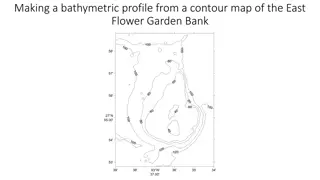

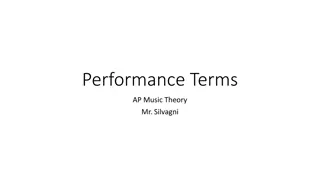
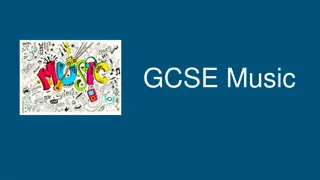

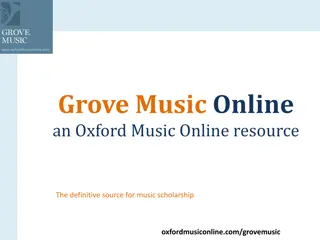
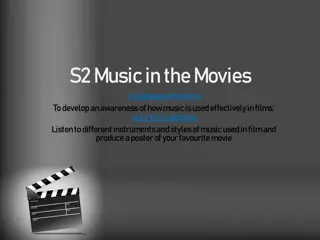

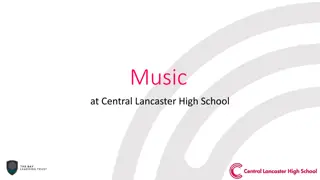



![Explore the Exciting World of Live Music Through [Insert Town/City] Census!](/thumb/148894/explore-the-exciting-world-of-live-music-through-insert-town-city-census.jpg)
